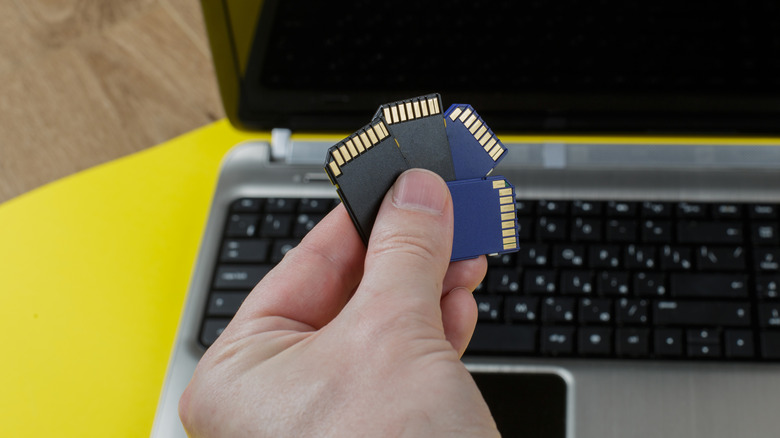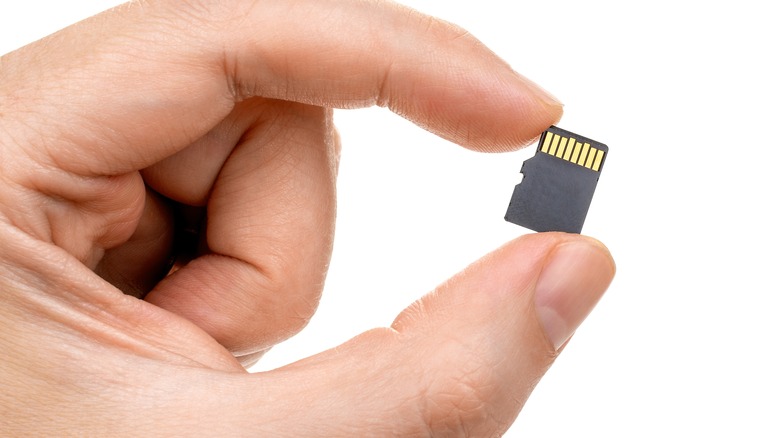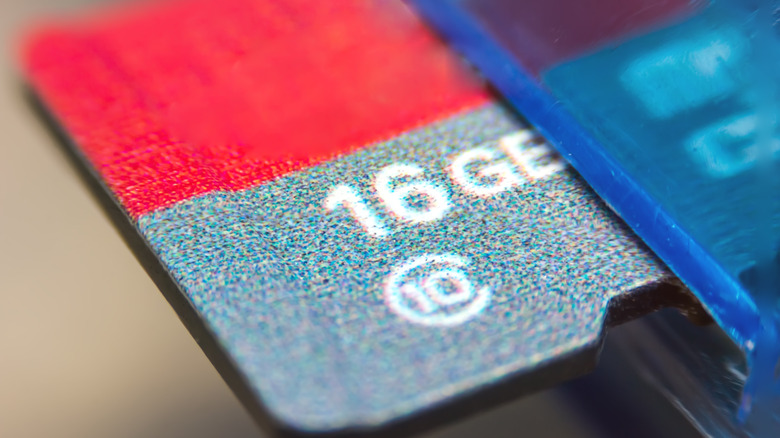Are 'High Endurance' MicroSD Cards Worth The Extra Cost?
We may receive a commission on purchases made from links.
Whether it's for a new smartphone, laptop, or hard drive, a very important figure in determining which one to buy is storage space. Some people are perfectly satisfied with the base level amount of space afforded to them, as they aren't downloading and storing many large files. Others need as much space as they can get. The same goes for SD cards.
While they can store many different file formats, SD cards are primarily used for storing footage from a camera, be it photos or videos, and depending on the camera you are using, it could be designed for the use of the even smaller microSD card. Now, if you are someone who shoots a lot of videos, you may think that just getting the highest capacity microSD card is the best option. However, it's not as simple as that.
Just look at the line of SanDisk microSD cards, the top brand for memory cards. There are so many variations, such as Ultra, Extreme, and Extreme Pro. You might have seen another moniker: "High Endurance." Endurance designations aren't just exclusive to SanDisk, though, and can be found on Samsung and many other brands' microSD cards as well.
The MSRP on a 512GB SanDisk Ultra microSD card is $36.99 and goes up to $44.99 with the Extreme model. However, the same capacity for a "High Endurance" model is $49.99. Let's break down the differences in these models and see if that price increase is justifiable for your particular needs if you're on the hunt for a new microSD card.
For long-running, frequent users
Just like deciding on a laptop, you choose a microSD card based on what you plan to use it for. You could be using it just to save games on your Nintendo Switch, but you could just as easily be using one to store footage from a constantly running security camera. If you are someone in the latter category who plans to use these cards on an incredibly frequent basis, then perhaps the "High Endurance" variety is right for you.
For that 512GB SanDisk model, it boasts the ability to record up to 40,000 hours. The amount of space on the card doesn't allow for that, so that means it holds up extremely well with constant writing and re-writing, which many cards don't do. Taking it up a step further is the Max Endurance model, which can record up to 120,000 hours on its 256GB edition. Samsung even ups that number to 140,000 on its 256GB Pro Endurance card.
For those only using them on an occasional basis, you probably can save a couple of bucks and go with the base options. But if you need long-lasting cards for lots of recording, these "High Endurance" cards will stand up far better than your standard offerings.
Tough under pressure
Though we may not think of them as such, microSD cards are just little slivers of plastic and metal, and they are as susceptible to their environment as anything else. While these "High Endurance" models refer to their processing abilities, they also just refer to their ability to hold up under less-than-ideal conditions, be it unusually extreme temperatures or contact with water. So, if you have one of these in an exterior security camera in the dead of winter, you don't need to be too worried about it faltering on you.
These "High Endurance" microSD cards are for people who know they are going to put some wear and tear on them. That doesn't just mean the environment in which you record them but also in how you are transferring your cards. These cards are incredibly small, and taking your card out of your camera, plugging it into your computer, and taking it back out of your computer to put it back in your camera will naturally affect the functionality of that card.
The "High Endurance" cards are meant to withstand that kind of physicality and are built for someone who constantly takes cards in and out of their devices. If your microSD card rarely makes its way out of your device, like if your primary need is to save your games on a Nintendo Switch, then this upgrade would be rather moot.
"High Endurance" is an appropriate name for this line of microSD cards. These are for high volume, high-performance users, and for those who need the most bang for their buck, a "High Endurance" microSD could very well be worth that several-dollar upcharge.


